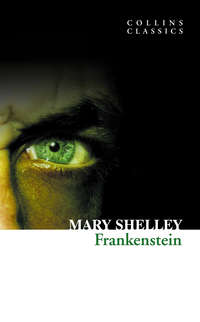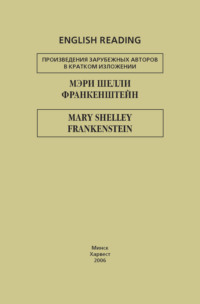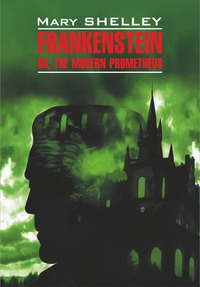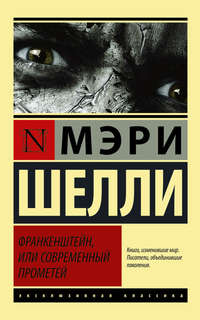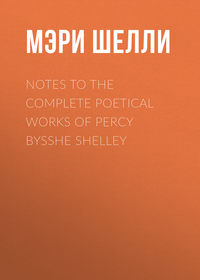 полная версия
полная версияMathilda

Mary Wollstonecraft Shelley
Mathilda
This volume prints for the first time the full text of Mary Shelley's novelette Mathilda together with the opening pages of its rough draft, The Fields of Fancy. They are transcribed from the microfilm of the notebooks belonging to Lord Abinger which is in the library of Duke University.
The text follows Mary Shelley's manuscript exactly except for the omission of mere corrections by the author, most of which are negligible; those that are significant are included and explained in the notes. Footnotes indicated by an asterisk are Mrs. Shelley's own notes. She was in general a fairly good speller, but certain words, especially those in which there was a question of doubling or not doubling a letter, gave her trouble: untill (though occasionally she deleted the final l or wrote the word correctly), agreable, occured, confering, buble, meaness, receeded, as well as hopless, lonly, seperate, extactic, sacrifise, desart, and words ending in – ance or – ence. These and other mispellings (even those of proper names) are reproduced without change or comment. The use of sic and of square brackets is reserved to indicate evident slips of the pen, obviously incorrect, unclear, or incomplete phrasing and punctuation, and my conjectures in emending them.
I am very grateful to the library of Duke University and to its librarian, Dr. Benjamin E. Powell, not only for permission to transcribe and publish this work by Mary Shelley but also for the many courtesies shown to me when they welcomed me as a visiting scholar in 1956. To Lord Abinger also my thanks are due for adding his approval of my undertaking, and to the Curators of the Bodleian Library for permiting me to use and to quote from the papers in the reserved Shelley Collection. Other libraries and individuals helped me while I was editing Mathilda: the Enoch Pratt Free Library of Baltimore, whose Literature and Reference Departments went to endless trouble for me; the Julia Rogers Library of Goucher College and its staff; the library of the University of Pennsylvania; Miss R. Glynn Grylls (Lady Mander); Professor Lewis Patton of Duke University; Professor Frederick L. Jones of the University of Pennsylvania; and many other persons who did me favors that seemed to them small but that to me were very great.
I owe much also to previous books by and about the Shelleys. Those to which I have referred more than once in the introduction and notes are here given with the abbreviated form which I have used:
Frederick L. Jones, ed. The Letters of Mary W. Shelley, 2 vols. Norman: University of Oklahoma Press, 1944 (Letters)
– Mary Shelley's Journal. Norman: University of Oklahoma Press, 1947 (Journal)
Roger Ingpen and W.E. Peck, eds. The Complete Works of Percy Bysshe Shelley, Julian Edition, 10 vols. London, 1926-1930 (Julian Works)
Newman Ivey White. Shelley, 2 vols. New York: Knopf, 1940 (White, Shelley)
Elizabeth Nitchie. Mary Shelley, Author of "Frankenstein." New Brunswick: Rutgers University Press, 1953 (Nitchie, Mary Shelley)
May, 1959
INTRODUCTIONOf all the novels and stories which Mary Wollstonecraft Shelley left in manuscript,1 only one novelette, Mathilda, is complete. It exists in both rough draft and final copy. In this story, as in all Mary Shelley's writing, there is much that is autobiographical: it would be hard to find a more self-revealing work. For an understanding of Mary's character, especially as she saw herself, and of her attitude toward Shelley and toward Godwin in 1819, this tale is an important document. Although the main narrative, that of the father's incestuous love for his daughter, his suicide, and Mathilda's consequent withdrawal from society to a lonely heath, is not in any real sense autobiographical, many elements in it are drawn from reality. The three main characters are clearly Mary herself, Godwin, and Shelley, and their relations can easily be reassorted to correspond with actuality.
Highly personal as the story was, Mary Shelley hoped that it would be published, evidently believing that the characters and the situations were sufficiently disguised. In May of 1820 she sent it to England by her friends, the Gisbornes, with a request that her father would arrange for its publication. But Mathilda, together with its rough draft entitled The Fields of Fancy, remained unpublished among the Shelley papers. Although Mary's references to it in her letters and journal aroused some curiosity among scholars, it also remained unexamined until comparatively recently.
This seeming neglect was due partly to the circumstances attending the distribution of the family papers after the deaths of Sir Percy and Lady Shelley. One part of them went to the Bodleian Library to become a reserved collection which, by the terms of Lady Shelley's will, was opened to scholars only under definite restrictions. Another part went to Lady Shelley's niece and, in turn, to her heirs, who for a time did not make the manuscripts available for study. A third part went to Sir John Shelley-Rolls, the poet's grand-nephew, who released much important Shelley material, but not all the scattered manuscripts. In this division, the two notebooks containing the finished draft of Mathilda and a portion of The Fields of Fancy went to Lord Abinger, the notebook containing the remainder of the rough draft to the Bodleian Library, and some loose sheets containing additions and revisions to Sir John Shelley-Rolls. Happily all the manuscripts are now accessible to scholars, and it is possible to publish the full text of Mathilda with such additions from The Fields of Fancy as are significant.2
The three notebooks are alike in format.3 One of Lord Abinger's notebooks contains the first part of The Fields of Fancy, Chapter 1 through the beginning of Chapter 10, 116 pages. The concluding portion occupies the first fifty-four pages of the Bodleian notebook. There is then a blank page, followed by three and a half pages, scored out, of what seems to be a variant of the end of Chapter 1 and the beginning of Chapter 2. A revised and expanded version of the first part of Mathilda's narrative follows (Chapter 2 and the beginning of Chapter 3), with a break between the account of her girlhood in Scotland and the brief description of her father after his return. Finally there are four pages of a new opening, which was used in Mathilda. This is an extremely rough draft: punctuation is largely confined to the dash, and there are many corrections and alterations. The Shelley-Rolls fragments, twenty-five sheets or slips of paper, usually represent additions to or revisions of The Fields of Fancy: many of them are numbered, and some are keyed into the manuscript in Lord Abinger's notebook. Most of the changes were incorporated in Mathilda.
The second Abinger notebook contains the complete and final draft of Mathilda, 226 pages. It is for the most part a fair copy. The text is punctuated and there are relatively few corrections, most of them, apparently the result of a final rereading, made to avoid the repetition of words. A few additions are written in the margins. On several pages slips of paper containing evident revisions (quite possibly originally among the Shelley-Rolls fragments) have been pasted over the corresponding lines of the text. An occasional passage is scored out and some words and phrases are crossed out to make way for a revision. Following page 216, four sheets containing the conclusion of the story are cut out of the notebook. They appear, the pages numbered 217 to 223, among the Shelley-Rolls fragments. A revised version, pages 217 to 226, follows the cut.4
The mode of telling the story in the final draft differs radically from that in the rough draft. In The Fields of Fancy Mathilda's history is set in a fanciful framework. The author is transported by the fairy Fantasia to the Elysian Fields, where she listens to the discourse of Diotima and meets Mathilda. Mathilda tells her story, which closes with her death. In the final draft this unrealistic and largely irrelevant framework is discarded: Mathilda, whose death is approaching, writes out for her friend Woodville the full details of her tragic history which she had never had the courage to tell him in person.
The title of the rough draft, The Fields of Fancy, and the setting and framework undoubtedly stem from Mary Wollstonecraft's unfinished tale, The Cave of Fancy, in which one of the souls confined in the center of the earth to purify themselves from the dross of their earthly existence tells to Sagesta (who may be compared with Diotima) the story of her ill-fated love for a man whom she hopes to rejoin after her purgation is completed.5 Mary was completely familiar with her mother's works. This title was, of course, abandoned when the framework was abandoned, and the name of the heroine was substituted. Though it is worth noticing that Mary chose a name with the same initial letter as her own, it was probably taken from Dante. There are several references in the story to the cantos of the Purgatorio in which Mathilda appears. Mathilda's father is never named, nor is Mathilda's surname given. The name of the poet went through several changes: Welford, Lovel, Herbert, and finally Woodville.
The evidence for dating Mathilda in the late summer and autumn of 1819 comes partly from the manuscript, partly from Mary's journal. On the pages succeeding the portions of The Fields of Fancy in the Bodleian notebook are some of Shelley's drafts of verse and prose, including parts of Prometheus Unbound and of Epipsychidion, both in Italian, and of the preface to the latter in English, some prose fragments, and extended portions of the Defence of Poetry. Written from the other end of the book are the Ode to Naples and The Witch of Atlas. Since these all belong to the years 1819, 1820, and 1821, it is probable that Mary finished her rough draft some time in 1819, and that when she had copied her story, Shelley took over the notebook. Chapter 1 of Mathilda in Lord Abinger's notebook is headed, "Florence Nov. 9th. 1819." Since the whole of Mathilda's story takes place in England and Scotland, the date must be that of the manuscript. Mary was in Florence at that time.
These dates are supported by entries in Mary's journal which indicate that she began writing Mathilda, early in August, while the Shelleys were living in the Villa Valosano, near Leghorn. On August 4, 1819, after a gap of two months from the time of her little son's death, she resumed her diary. Almost every day thereafter for a month she recorded, "Write," and by September 4, she was saying, "Copy." On September 12 she wrote, "Finish copying my Tale." The next entry to indicate literary activity is the one word, "write," on November 8. On the 12th Percy Florence was born, and Mary did no more writing until March, when she was working on Valperga. It is probable, therefore, that Mary wrote and copied Mathilda between August 5 and September 12, 1819, that she did some revision on November 8 and finally dated the manuscript November 9.
The subsequent history of the manuscript is recorded in letters and journals. When the Gisbornes went to England on May 2, 1820, they took Mathilda with them; they read it on the journey and recorded their admiration of it in their journal.6 They were to show it to Godwin and get his advice about publishing it. Although Medwin heard about the story when he was with the Shelleys in 18207 and Mary read it – perhaps from the rough draft – to Edward and Jane Williams in the summer of 1821,8 this manuscript apparently stayed in Godwin's hands. He evidently did not share the Gisbornes' enthusiasm: his approval was qualified. He thought highly of certain parts of it, less highly of others; and he regarded the subject as "disgusting and detestable," saying that the story would need a preface to prevent readers "from being tormented by the apprehension … of the fall of the heroine," – that is, if it was ever published.9 There is, however, no record of his having made any attempt to get it into print. From January 18 through June 2, 1822, Mary repeatedly asked Mrs. Gisborne to retrieve the manuscript and have it copied for her, and Mrs. Gisborne invariably reported her failure to do so. The last references to the story are after Shelley's death in an unpublished journal entry and two of Mary's letters. In her journal for October 27, 1822, she told of the solace for her misery she had once found in writing Mathilda. In one letter to Mrs. Gisborne she compared the journey of herself and Jane to Pisa and Leghorn to get news of Shelley and Williams to that of Mathilda in search of her father, "driving – (like Matilda), towards the sea to learn if we were to be for ever doomed to misery."10 And on May 6, 1823, she wrote, "Matilda foretells even many small circumstances most truly – and the whole of it is a monument of what now is."11
These facts not only date the manuscript but also show Mary's feeling of personal involvement in the story. In the events of 1818-1819 it is possible to find the basis for this morbid tale and consequently to assess its biographical significance.
On September 24, 1818, the Shelleys' daughter, Clara Everina, barely a year old, died at Venice. Mary and her children had gone from Bagni di Lucca to Este to join Shelley at Byron's villa. Clara was not well when they started, and she grew worse on the journey. From Este Shelley and Mary took her to Venice to consult a physician, a trip which was beset with delays and difficulties. She died almost as soon as they arrived. According to Newman Ivey White,12 Mary, in the unreasoning agony of her grief, blamed Shelley for the child's death and for a time felt toward him an extreme physical antagonism which subsided into apathy and spiritual alienation. Mary's black moods made her difficult to live with, and Shelley himself fell into deep dejection. He expressed his sense of their estrangement in some of the lyrics of 1818 – "all my saddest poems." In one fragment of verse, for example, he lamented that Mary had left him "in this dreary world alone."
Thy form is here indeed – a lovely one —But thou art fled, gone down the dreary road,That leads to Sorrow's most obscure abode.Thou sittest on the hearth of pale despair,WhereFor thine own sake I cannot follow thee.Professor White believed that Shelley recorded this estrangement only "in veiled terms" in Julian and Maddalo or in poems that he did not show to Mary, and that Mary acknowledged it only after Shelley's death, in her poem "The Choice" and in her editorial notes on his poems of that year. But this unpublished story, written after the death of their other child William, certainly contains, though also in veiled terms, Mary's immediate recognition and remorse. Mary well knew, I believe, what she was doing to Shelley. In an effort to purge her own emotions and to acknowledge her fault, she poured out on the pages of Mathilda the suffering and the loneliness, the bitterness and the self-recrimination of the past months.
The biographical elements are clear: Mathilda is certainly Mary herself; Mathilda's father is Godwin; Woodville is an idealized Shelley.
Like Mathilda Mary was a woman of strong passions and affections which she often hid from the world under a placid appearance. Like Mathilda's, Mary's mother had died a few days after giving her birth. Like Mathilda she spent part of her girlhood in Scotland. Like Mathilda she met and loved a poet of "exceeding beauty," and – also like Mathilda – in that sad year she had treated him ill, having become "captious and unreasonable" in her sorrow. Mathilda's loneliness, grief, and remorse can be paralleled in Mary's later journal and in "The Choice." This story was the outlet for her emotions in 1819.
Woodville, the poet, is virtually perfect, "glorious from his youth," like "an angel with winged feet" – all beauty, all goodness, all gentleness. He is also successful as a poet, his poem written at the age of twenty-three having been universally acclaimed. Making allowance for Mary's exaggeration and wishful thinking, we easily recognize Shelley: Woodville has his poetic ideals, the charm of his conversation, his high moral qualities, his sense of dedication and responsibility to those he loved and to all humanity. He is Mary's earliest portrait of her husband, drawn in a year when she was slowly returning to him from "the hearth of pale despair."
The early circumstances and education of Godwin and of Mathilda's father were different. But they produced similar men, each extravagant, generous, vain, dogmatic. There is more of Godwin in this tale than the account of a great man ruined by character and circumstance. The relationship between father and daughter, before it was destroyed by the father's unnatural passion, is like that between Godwin and Mary. She herself called her love for him "excessive and romantic."13 She may well have been recording, in Mathilda's sorrow over her alienation from her father and her loss of him by death, her own grief at a spiritual separation from Godwin through what could only seem to her his cruel lack of sympathy. He had accused her of being cowardly and insincere in her grief over Clara's death14 and later he belittled her loss of William.15 He had also called Shelley "a disgraceful and flagrant person" because of Shelley's refusal to send him more money.16 No wonder if Mary felt that, like Mathilda, she had lost a beloved but cruel father.
Thus Mary took all the blame for the rift with Shelley upon herself and transferred the physical alienation to the break in sympathy with Godwin. That she turned these facts into a story of incest is undoubtedly due to the interest which she and Shelley felt in the subject at this time. They regarded it as a dramatic and effective theme. In August of 1819 Shelley completed The Cenci. During its progress he had talked over with Mary the arrangement of scenes; he had even suggested at the outset that she write the tragedy herself. And about a year earlier he had been urging upon her a translation of Alfieri's Myrrha. Thomas Medwin, indeed, thought that the story which she was writing in 1819 was specifically based on Myrrha. That she was thinking of that tragedy while writing Mathilda is evident from her effective use of it at one of the crises in the tale. And perhaps she was remembering her own handling of the theme when she wrote the biographical sketch of Alfieri for Lardner's Cabinet Cyclopaedia nearly twenty years later. She then spoke of the difficulties inherent in such a subject, "inequality of age adding to the unnatural incest. To shed any interest over such an attachment, the dramatist ought to adorn the father with such youthful attributes as would be by no means contrary to probability."17 This she endeavored to do in Mathilda (aided indeed by the fact that the situation was the reverse of that in Myrrha). Mathilda's father was young: he married before he was twenty. When he returned to Mathilda, he still showed "the ardour and freshness of feeling incident to youth." He lived in the past and saw his dead wife reincarnated in his daughter. Thus Mary attempts to validate the situation and make it "by no means contrary to probability."
Mathilda offers a good example of Mary Shelley's methods of revision. A study of the manuscript shows that she was a careful workman, and that in polishing this bizarre story she strove consistently for greater credibility and realism, more dramatic (if sometimes melodramatic) presentation of events, better motivation, conciseness, and exclusion of purple passages. In the revision and rewriting, many additions were made, so that Mathilda is appreciably longer than The Fields of Fancy. But the additions are usually improvements: a much fuller account of Mathilda's father and mother and of their marriage, which makes of them something more than lay figures and to a great extent explains the tragedy; development of the character of the Steward, at first merely the servant who accompanies Mathilda in her search for her father, into the sympathetic confidant whose responses help to dramatise the situation; an added word or short phrase that marks Mary Shelley's penetration into the motives and actions of both Mathilda and her father. Therefore Mathilda does not impress the reader as being longer than The Fields of Fancy because it better sustains his interest. And with all the additions there are also effective omissions of the obvious, of the tautological, of the artificially elaborate.18
The finished draft, Mathilda, still shows Mary Shelley's faults as a writer: verbosity, loose plotting, somewhat stereotyped and extravagant characterization. The reader must be tolerant of its heroine's overwhelming lamentations. But she is, after all, in the great tradition of romantic heroines: she compares her own weeping to that of Boccaccio's Ghismonda over the heart of Guiscardo. If the reader can accept Mathilda on her own terms, he will find not only biographical interest in her story but also intrinsic merits: a feeling for character and situation and phrasing that is often vigorous and precise.
MATHILDA 19
CHAP. I
Florence. Nov. 9th 1819
It is only four o'clock; but it is winter and the sun has already set: there are no clouds in the clear, frosty sky to reflect its slant beams, but the air itself is tinged with a slight roseate colour which is again reflected on the snow that covers the ground. I live in a lone cottage on a solitary, wide heath: no voice of life reaches me. I see the desolate plain covered with white, save a few black patches that the noonday sun has made at the top of those sharp pointed hillocks from which the snow, sliding as it fell, lay thinner than on the plain ground: a few birds are pecking at the hard ice that covers the pools – for the frost has been of long continuance.20
I am in a strange state of mind.21 I am alone – quite alone – in the world – the blight of misfortune has passed over me and withered me; I know that I am about to die and I feel happy – joyous. – I feel my pulse; it beats fast: I place my thin hand on my cheek; it burns: there is a slight, quick spirit within me which is now emitting its last sparks. I shall never see the snows of another winter – I do believe that I shall never again feel the vivifying warmth of another summer sun; and it is in this persuasion that I begin to write my tragic history. Perhaps a history such as mine had better die with me, but a feeling that I cannot define leads me on and I am too weak both in body and mind to resist the slightest impulse. While life was strong within me I thought indeed that there was a sacred horror in my tale that rendered it unfit for utterance, and now about to die I pollute its mystic terrors. It is as the wood of the Eumenides none but the dying may enter; and Oedipus is about to die.22
What am I writing? – I must collect my thoughts. I do not know that any will peruse these pages except you, my friend, who will receive them at my death. I do not address them to you alone because it will give me pleasure to dwell upon our friendship in a way that would be needless if you alone read what I shall write. I shall relate my tale therefore as if I wrote for strangers. You have often asked me the cause of my solitary life; my tears; and above all of my impenetrable and unkind silence. In life I dared not; in death I unveil the mystery. Others will toss these pages lightly over: to you, Woodville, kind, affectionate friend, they will be dear – the precious memorials of a heart-broken girl who, dying, is still warmed by gratitude towards you:23 your tears will fall on the words that record my misfortunes; I know they will – and while I have life I thank you for your sympathy.
But enough of this. I will begin my tale: it is my last task, and I hope I have strength sufficient to fulfill it. I record no crimes; my faults may easily be pardoned; for they proceeded not from evil motive but from want of judgement; and I believe few would say that they could, by a different conduct and superior wisdom, have avoided the misfortunes to which I am the victim. My fate has been governed by necessity, a hideous necessity. It required hands stronger than mine; stronger I do believe than any human force to break the thick, adamantine chain that has bound me, once breathing nothing but joy, ever possessed by a warm love & delight in goodness, – to misery only to be ended, and now about to be ended, in death. But I forget myself, my tale is yet untold. I will pause a few moments, wipe my dim eyes, and endeavour to lose the present obscure but heavy feeling of unhappiness in the more acute emotions of the past.24





